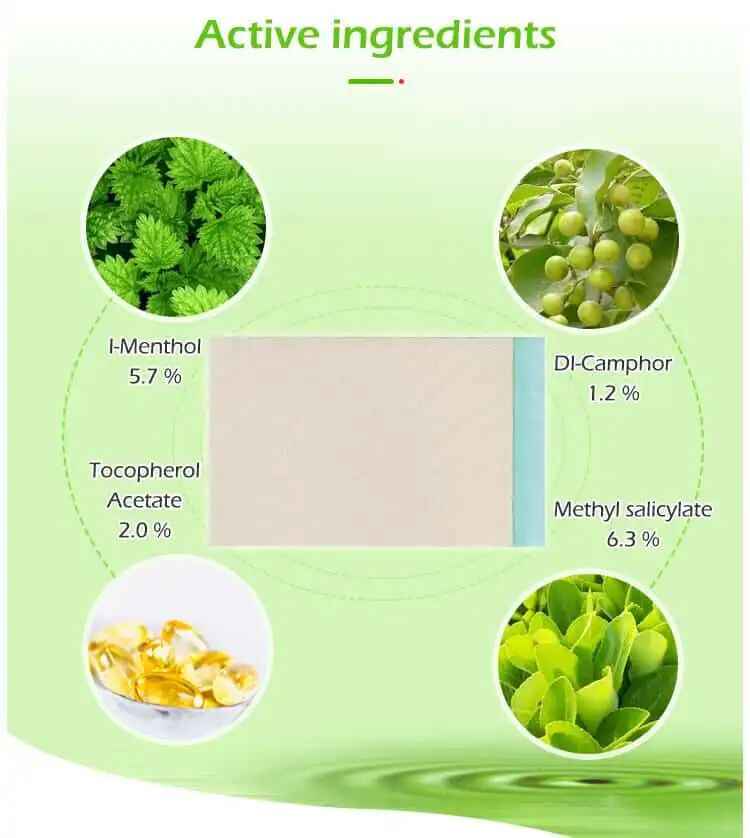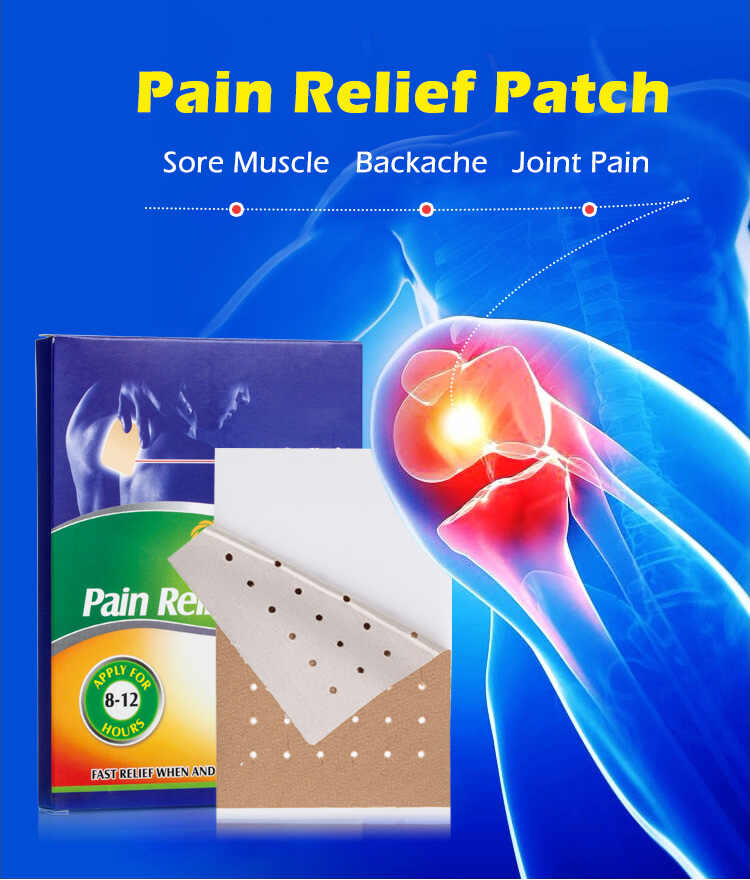Best Practices in Cost Control and Supply Chain Management for Heat Therapy Patch OEM
In today's competitive market, managing costs and optimizing supply chains are essential for businesses involved in the manufacturing and distribution of Heat Therapy Patches. Whether you're a Heat Therapy Patch Manufacturer, an OEM partner, or a supplier offering Custom Heat Therapy Patches or Private Label Heat Therapy Patches, efficient cost control and supply chain management can significantly impact your bottom line. In this article, we'll explore the best practices that can help you streamline operations, reduce costs, and improve overall efficiency in your Heat Therapy Patch production process.

1. Understanding the Importance of Cost Control in Heat Therapy Patch Manufacturing
The cost of manufacturing Heat Therapy Patches can vary greatly depending on the materials used, the complexity of the design, and the manufacturing process itself. For Heat Therapy Patch Manufacturers and Heat Therapy Patch OEMs, the ability to control costs directly influences profitability, product quality, and competitiveness in the market.
Cost control is not only about reducing expenses but also about optimizing processes to maximize value. It involves:
Raw material costs: Sourcing quality ingredients or materials at competitive prices.
Labor costs: Efficient workforce management, training, and leveraging automation where applicable.
Overhead costs: Minimizing waste, reducing energy consumption, and improving operational efficiency.
When working with Custom Heat Therapy Patch orders or offering Private Label Heat Therapy Patch products, managing these costs becomes even more crucial, as businesses may need to meet specific requirements or specifications that could affect overall cost structures.
2. Best Practices for Cost Control in Heat Therapy Patch OEM Manufacturing
1. Efficient Sourcing and Supplier Management
The foundation of cost control starts with efficient sourcing. As a Heat Therapy Patch Supplier or OEM partner, maintaining strong relationships with raw material suppliers can help ensure favorable pricing, timely deliveries, and product consistency.
Best practices in sourcing include:
Negotiating Bulk Discounts: Purchasing materials in bulk often results in significant savings. If your business regularly produces Custom Heat Therapy Patches, it may be worth negotiating long-term contracts with suppliers to lock in favorable pricing.
Diversifying Suppliers: Relying on a single supplier can lead to disruptions and inflated prices. To mitigate risks, work with multiple suppliers to diversify your sources of raw materials.
Building Strategic Partnerships: Strong, long-term relationships with trusted suppliers can help with cost reductions, quality control, and timely deliveries. Suppliers with a deep understanding of the Heat Therapy Patch manufacturing process can assist in optimizing material usage and production schedules.
2. Streamlining Production Processes
Streamlining production processes is essential for reducing operational costs. Heat Therapy Patch Manufacturers should aim to eliminate inefficiencies in the production line and ensure that resources are being utilized optimally.
Best practices in production include:
Lean Manufacturing Techniques: Implement lean principles such as waste reduction, continuous improvement, and just-in-time (JIT) production to minimize downtime, reduce inventory, and lower operational costs.
Automation and Technology: Investing in automated machinery can significantly reduce labor costs while increasing production speed and consistency. Automation also minimizes human error, improving product quality.
Regular Equipment Maintenance: Preventative maintenance of machinery can reduce the risk of unexpected breakdowns and expensive repairs, helping to keep production costs down.
3. Optimizing Packaging and Shipping
For Heat Therapy Patch OEMs, the cost of packaging and shipping can be a significant portion of the overall production cost. Optimizing these aspects can help control costs and improve the efficiency of the supply chain.
Best practices in packaging and shipping include:
Efficient Packaging Design: Using packaging that minimizes space, weight, and material waste can significantly reduce shipping costs. For Private Label Heat Therapy Patch products, consider custom packaging that is both cost-effective and aesthetically appealing.
Bulk Shipping and Distribution Networks: Consolidating shipments and using efficient distribution networks can reduce transportation costs. Partnering with reliable logistics providers who offer competitive rates can also help optimize shipping expenses.
Sustainable Packaging: In addition to reducing costs, sustainability has become a key selling point. Opting for eco-friendly packaging solutions can attract environmentally conscious consumers and differentiate your brand in the market.
4. Managing Inventory Levels
Excess inventory ties up capital and increases storage costs, while insufficient inventory can result in stockouts and lost sales. For Heat Therapy Patch Suppliers, it's critical to maintain optimal inventory levels that meet demand without excessive stock.
Best practices for inventory management include:
Just-In-Time (JIT) Inventory: This approach reduces inventory holding costs by ordering materials and products only when needed for production. By minimizing stock levels, JIT helps reduce warehouse expenses.
Inventory Forecasting: Using historical data and market trends, you can better predict demand and adjust inventory levels accordingly. This allows for more accurate purchasing and production planning.
Inventory Management Software: Implementing advanced software solutions can streamline the inventory management process, providing real-time updates and preventing overstocking or understocking.
3. Best Practices for Supply Chain Management in Heat Therapy Patch OEM
Effective supply chain management is critical for ensuring that products are delivered on time, within budget, and in the required quantities. Heat Therapy Patch Manufacturers and OEM partners should adopt best practices to manage their supply chains efficiently.
1. Collaborating with Reliable Logistics Partners
Choosing the right logistics partner is key to ensuring cost-effective and timely delivery of products. Reliable logistics companies offer tracking capabilities, competitive rates, and global reach, ensuring smooth delivery to markets worldwide.
Best practices for logistics management include:
Partnership with 3PL Providers: Third-party logistics (3PL) providers offer flexibility, scalability, and cost-efficiency. These partners handle warehousing, order fulfillment, and distribution, allowing businesses to focus on production.
Optimizing Delivery Routes: Efficient route planning reduces shipping costs, fuel consumption, and transit times. By optimizing delivery routes, you can cut costs while improving customer satisfaction.
2. Monitoring Supplier Performance
Effective supply chain management requires close monitoring of suppliers’ performance to ensure they meet the required standards in terms of quality, delivery times, and costs.
Best practices include:
Supplier Audits: Regularly auditing suppliers helps ensure they are adhering to quality standards and meeting agreed-upon terms. For Custom Heat Therapy Patches, this is especially important to ensure consistency in quality.
Performance Reviews: Use key performance indicators (KPIs) to evaluate supplier performance. Metrics such as lead time, defect rates, and order accuracy can help identify areas for improvement.
Building Strong Relationships: A strong relationship with suppliers fosters communication and trust, making it easier to resolve issues quickly and maintain a reliable supply chain.
3. Risk Management in the Supply Chain
Managing risks in the supply chain is critical for avoiding disruptions that could lead to increased costs or delays. Identifying and mitigating risks should be a priority for any Heat Therapy Patch OEM or manufacturer.
Best practices for risk management include:
Diversifying Suppliers: Relying on a single supplier or logistics provider can expose you to risks such as price hikes or supply chain disruptions. Diversifying your supplier base reduces these risks and provides more flexibility.
Contingency Planning: Having a contingency plan in place allows you to quickly respond to supply chain disruptions, such as delays or material shortages. This might involve finding alternative suppliers or adjusting production schedules.
4. Conclusion
Managing costs and optimizing the supply chain are fundamental for the success of any Heat Therapy Patch OEM or Private Label Heat Therapy Patch business. By focusing on efficient sourcing, streamlined production processes, inventory management, and strong supplier relationships, manufacturers can minimize costs and improve overall operational efficiency. In today’s competitive market, adopting best practices in cost control and supply chain management is key to maintaining a sustainable and profitable business.
Related Questions and Answers
Q1: How can I reduce the costs of materials for Heat Therapy Patch production?
A1: Negotiate bulk discounts with suppliers, diversify your supplier base, and establish long-term contracts to lock in favorable pricing.
Q2: What are the benefits of lean manufacturing in Heat Therapy Patch production?
A2: Lean manufacturing reduces waste, improves production speed, and minimizes downtime, leading to lower operational costs and higher efficiency.
Q3: How can I optimize inventory management for Heat Therapy Patches?
A3: Implement just-in-time (JIT) inventory systems, use demand forecasting tools, and adopt inventory management software to prevent overstocking and understocking.
Q4: What role does packaging play in cost control for Heat Therapy Patch OEM?
A4: Efficient packaging reduces shipping costs, minimizes material waste, and can improve the aesthetic appeal of Private Label Heat Therapy Patches.
Q5: How can I ensure timely delivery of my Heat Therapy Patches?
A5: Partner with reliable logistics providers, optimize delivery routes, and work with 3PL providers to streamline warehousing and distribution.






